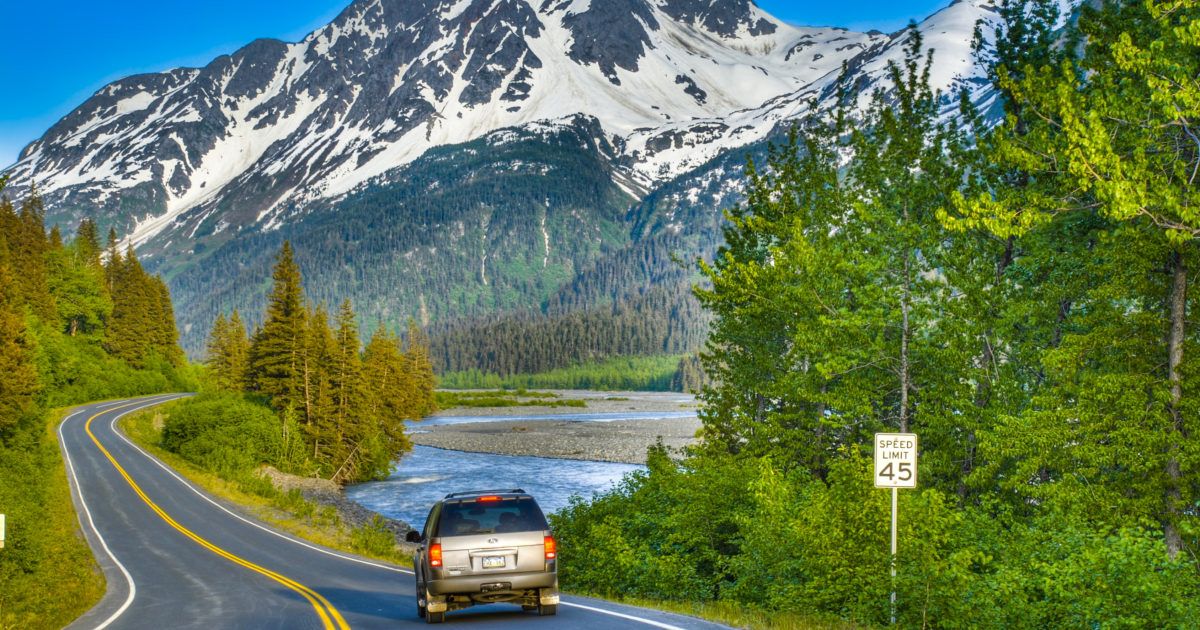Imagine cruising along endless highways, mountains rising majestically on one side and sprawling wilderness on the other. The journey to Alaska by road offers exactly this—an unparalleled adventure that many dream about but few actually experience. Yes, you absolutely can drive to Alaska from the continental United States, and the journey itself becomes as memorable as the destination.
The Alaska Highway: Your Gateway to the Last Frontier
The primary route for driving to Alaska is the legendary Alaska Highway (also called the ALCAN Highway). Beginning in Dawson Creek, British Columbia, this 1,387-mile engineering marvel stretches north to Delta Junction, Alaska. Built during World War II in just eight months, today’s highway is fully paved and maintained year-round, though winter driving requires special preparation.
What many travelers don’t realize is that before reaching the Alaska Highway’s starting point, you’ll already have driven significant distances through Canada—approximately 613 miles from the U.S.-Canada border in Montana to Dawson Creek.
Route Options When Driving to Alaska
Depending on your starting location in the continental U.S., several routes can take you to the Alaska Highway:
| Starting Region | Recommended Route | Approximate Distance to Dawson Creek | Notable Features |
|---|---|---|---|
| Pacific Northwest | Via Vancouver & Prince George | 750 miles from Seattle | Scenic coastal views, mountain passes |
| Mountain West | Via Calgary & Edmonton | 1,000 miles from Montana border | Prairie landscapes, Canadian Rockies |
| Midwest/East | Via Winnipeg & Saskatoon | 1,500+ miles from North Dakota border | Vast plains, northern forests |
Essential Planning Tips for Driving to Alaska
Before embarking on this epic road trip, consider these crucial points:
- Documentation Requirements: You’ll need a valid passport to cross into Canada and re-enter the United States. If traveling with pets, ensure you have proper vaccination records.
- Vehicle Preparation: Your vehicle should be in excellent condition. Consider bringing:
- A full-sized spare tire
- Basic repair tools
- Jumper cables
- Extra fluids (oil, coolant, washer fluid)
- Seasonal Considerations: Summer (June-August) offers the best driving conditions with long daylight hours. Winter driving to Alaska requires specialized equipment including snow tires, emergency supplies, and extensive winter driving experience.
- Communication Planning: Cell coverage is spotty along much of the route. Consider renting a satellite phone or GPS messenger for emergency communications.
What Makes Driving to Alaska Worth It
The journey offers experiences you simply can’t get any other way:
- Encounters with abundant wildlife including bears, moose, and bison often visible from the roadside
- Access to hidden hot springs, hiking trails, and fishing spots not reached by cruise ships
- Freedom to explore authentic small towns and meet locals
- The satisfaction of completing one of North America’s most iconic road trips
A Realistic Itinerary for Driving to Alaska
While some travelers rush the journey in 3-4 days, I recommend allowing at least 7-10 days each way to truly appreciate the experience. Here’s a sample northbound itinerary starting from Seattle:
Day 1: Seattle to Vancouver (141 miles)
Day 2: Vancouver to Prince George (470 miles)
Day 3: Prince George to Fort Nelson (300 miles)
Day 4: Fort Nelson to Watson Lake (320 miles)
Day 5: Watson Lake to Whitehorse (270 miles)
Day 6: Whitehorse to Haines Junction (100 miles)
Day 7: Haines Junction to Tok, Alaska (290 miles)
Day 8: Tok to Anchorage (320 miles)
The Financial Reality of Driving to Alaska
Driving to Alaska isn’t necessarily cheaper than flying, especially with current fuel prices. Budget approximately:
- $800-1,200 for fuel (round trip from Seattle in an average SUV)
- $700-1,200 for accommodations (7-10 nights each way)
- $500-800 for food and miscellaneous expenses
- Plus vehicle maintenance/preparation costs
However, the experience and flexibility you gain are priceless compared to commercial transportation.
Common Misconceptions About Driving to Alaska
Many first-timers have misconceptions about this journey:
- “The roads are mostly gravel and dangerous” – False. The Alaska Highway is fully paved, though construction zones may have short gravel sections.
- “You need a 4WD vehicle” – Not necessarily. Any well-maintained vehicle with good ground clearance will suffice in summer.
- “There’s nowhere to stay along the route” – Untrue. Towns with accommodations appear roughly every 100-200 miles.
- “Cell phones work throughout the journey” – Unfortunately not. Prepare for significant stretches without service.
Essential Resources for Planning Your Alaska Driving Adventure
Before setting out, consult:
- The “Milepost” guide – detailed mile-by-mile descriptions of all routes to Alaska
- Government websites for current border crossing requirements
- Road condition reports from Alaska and Canadian highway departments
- Local weather forecasts for all regions along your route
Is Driving to Alaska Right for You?
Driving to Alaska isn’t for everyone. It’s perfect for:
- Independent travelers who enjoy long-distance driving
- Wildlife and photography enthusiasts
- Those with flexible schedules who can take their time
- Adventure seekers wanting to explore beyond typical tourist destinations
The journey demands patience, adaptability, and a genuine love for the road. But for those who make the trip, driving to Alaska creates lifetime memories that no packaged tour can match.
Whether you’re planning a summer adventure under the midnight sun or brave enough to attempt a winter journey through snow-covered landscapes, driving to Alaska remains one of North America’s defining road trip experiences. The question isn’t really “Can you drive to Alaska?” but rather “When will you take the adventure of driving to Alaska?”

Riddhi Shanishchara is a passionate writer with a deep understanding of sports, culture, and insightful content creation. He brings years of experience and a fresh perspective to every article.
